 “Death In Venice”
“Death In Venice”
An Existentialist’s Commentary on Victorian Sensibilities
By Vincent Jordan Niklaus de los Reyes-TorresA Storyline’s Discourse on Art and the Artist An understanding of Luchino Visconti’s film adaptation of Thomas Mann’s Death in Venice would be somewhat daunting without having read the novel. The novel itself, a classic in literary existentialism is presented as a pure narrative, almost completely devoid of dialogue or characters directly interacting with one another. Thomas Mann wrote his novel as a study in pure literary form, descriptive and atmospheric, strictly stream of consciousness rather than involving the conventions of scenes with characters playing out their existence in terms of dialogue. Visconti makes this adjustment by creating scenes with dialogue for his characters, thereby filling in the blanks as it were of where his literary source left of and he does so in the pure, larger than life eloquence of his cinematic medium.
The film begins with an almost painfully beautiful sunset as a steamer moves along the Grand Canal nearing the port of Venice. The character of Professor Gustav Von Aschenbach is seen alone on a wicker chaise, wrapped in coats. The plaintive strains of Mahler’s Third Symphony is played on the soundtrack; music that Aschenbach echoes in the sadness or in the forlorn expression on his face. He boards a gondola. The gondolier offers to bring him straight to the Lido (the famed Venetian beach front lined with resorts and the famous tents which until today have not changed in their appearance and function), to the hotel where he is booked but he vehemently refuses to be taken straight there and instead insists to be taken to the steam ship dock to take only the hotel’s exclusive gondola service. Here we see that the character of Gustav Von Aschenbach is that of a man rigidly set in his ways and at this point in his life, he goes about it like that of a prissy old maid, a condition which the film will later unravel as something he is already predisposed to. A bizarre looking foppish drunk, old and wearing garish make-up who is making an ass of himself is seen on the quay, almost like a rather gaudy portent of things to come.
As Aschenbach settles into his suite at the Lido, we learn from an inconspicuous flashback that he is actually ill, that his heart is failing and that his doctor has recommended complete rest for him, thus this holiday in Venice. From this flashback, he is seen talking to his best friend and colleague, Alfred. We also learn that they are both men of music, that Gustav Von Aschenbach is actually a renowned composer. As Alfred is seen playing what is perhaps one of his compositions, he sits up and gazes upon an antique hourglass, explaining that his family had one of these and further talks about how the aperture of the hourglass is so tiny that one hardly notices the sands flowing through it until all the sands have run out; “until then it’s not worth thinking about it…until it’s all gone” Almost as if saying that he hasn’t paid much attention to his own life until now that he is made to confront his mortality with his heart condition.
At the Lido, Aschenbach espies what Thomas Mann describes in his novel as an aristocratic, Eastern European looking family, composed of a stately mother, a governess, three uniformly dressed daughters of variant ages, and an adolescent boy. The boy is strikingly an unmistakable thing of beauty. A boy with a face so androgynous it is difficult to judge it as being either pretty or handsome. He possessed a face so divinely angelic that it can only be described as being BEAUTIFUL. Coming from the Aristotelian template of The Poetics on what is beautiful, defined much by the Greek penchant for youthful male beauty; Tadzio defines the image of the conduit of that beauty: ever so ideally pleasing to the eye of the viewer just like the marble statues of the classical age. And true to Thomas Mann’s presentation of this particular scene in his novel, Aschenbach only catches snatches of conversations from the Polish family but it is enough for him to detect that the boy’s name is Tadzio. And thus begins his descent into his own private hell.
Aschenbach cannot take his eyes on the boy as dinner ensues and here, Visconti uses a flashback device, which is to recur throughout the movie, scenes which involve Aschenbach and the character named Alfred. Alfred it seems is not only his good friend and confidant but also the voice of his conscience, his devil’s advocate, his artistic tormentor, and, in a manner of speaking, the only other person who may share Aschenbach’s unrealized homosexuality. Visconti brings into perspective his thesis on the character of Aschenbach in the following dialogue with Alfred:
Alfred: Beauty, you mean your spiritual conception of beauty?
Aschenbach: But do you deny the artist’s ability to create from the spirit?
Alfred: Yes, Gustav, that is precisely what I deny. Do you really believe that beauty is the product of labor?
Aschenbach: yes I do.
Alfred: That is how beauty is born, like that. Spontaneous. In utter disregard for your labor or mine. It pre-exists our presumptions as artists. Your great error my friend is that you consider life, reality as a limitation.
Aschenbach: But isn’t that what it is. Reality only demeans and distracts us. Sometimes I feel like I am aiming in the dark like a hunter. But you cannot expect life to illuminate the target. The creation of beauty is a spiritual act.
Alfred: Beauty belongs to the senses, only to the sense.
Aschenbach: But you can’t reach the spirit through the senses. It is only by complete domination of the senses that you can ever achieve wisdom, truth and human dignity.
Alfred: What use are they? Genius is a divine gift. Not a divine affliction; a simple, morbid flash fire of natural gifts.
Aschenbach: I reject, I reject the demonic virtues of art.
Alfred: Then you are wrong. Evil is necessary. It is the food of genius.
Aschenbach: You know Alfred, art is the highest form of education and the artist has to exemplary. He must be a model of balance and strength. He cannot be ambiguous.
Alfred: But Art is ambiguous. And music the most ambiguous of all the arts. It is ambiguity made a science.Here, Visconti establishes the character of Aschenbach as one of purest conventions: Someone who is unwilling to explore his dark side for the sake of morality, someone who cannot and will not see or go outside the box. The film moves into a series of close encounters between Aschenbach and Tadzio’s family, each time, he tries to deny the attraction that he feels for the boy. And we see Aschenbach consumed by the very sight of Tadzio that puts into perspective the bubbling conflicts within.
He tries to run away from the situation by leaving for Munich and on the flimsiest excuse - which was as one would recall, the loss of his luggage at the train station and his insistence that he would not leave Venice lest the luggage be returned which is nuanced with the actor’s relief that he was pleased that he was not to leave Venice at all - heads back to the Lido again. On the train station, he notices that a vagrant has collapsed from what appears to be a viral illness, a foreshadowing of that which he was to learn of Venice’s current state.
As he stalks Tadzio from a distance, he learns that a cholera epidemic is afoot. This was of course cinematically presented thru the disinfection of the city by the pouring of a malodorous milky liquid, postings on the walls from the city health department, and the suspicious avoidance of the Venetians to give him a straight answer when he asked. As he struggles between his inner conflicts over the attraction that he has for Tadzio, the film flashbacks into either snatches of his life; that he was once a family man with a wife and daughter, that he once tried to explore his sexuality in the confines of a brothel, that he lost his daughter, and that he has repeatedly tried to deny his homosexuality in the following flashback with Alfred:
Alfred: That is not shame that is fear. Shame is a spiritual distress to which you are immune because you are immune to feeling. You are a man of avoidance, of dislike, a keeper of distances. You are afraid to have direct, honest contact with anything because of your rigid standards of morality. You want to be as perfect as your music. Every slip is a fall, a catastrophe, resulting in irreparable contamination. To be in debt to one’s own senses, for a condition, which is irredeemably, corrupt and sick. What a joy for the artist!
Aschenbach: I have to find my balance somehow.
Alfred: How unfortunate that art is so indifferent from personal morality, Otherwise, you would be supreme, unreachable, inimitable. Tell me, do you know what lies at the bottom of the mainstream….Mediocrity?
Finally, we also learn from these series of flashbacks that Gustav Von Aschenbach’s last concert was a dismal flop, which caused him his near fatal heart attack. The words of Alfred taunting him with “Pure beauty, absolute severity. Purity of form! Perfection! The abstraction of the senses! It’s all gone. Nothing remains. Nothing. Your music is stillborn. You are unmasked.” All these harsh reality bites of course play bad only his already weak constitution and failing heart. From an artists point of view, Aschenbach has reached a dry spell in his musical career, characterized by his compositions in the concert drowned by the heckling and noise of a cruel audience; a kind of writer’s block. Aschenbach’s life struggles or hurdles have taken its toll on his music and even the heart ailment is seen as secondary.
In a vain attempt to appear young again, he tries to doll himself up n a barbershop, the result is that of the macabre fop that he meets earlier in the movie (dyed hair and eyelashes, unusually curled mustache, and a powdered face that would rival a Peking Opera actress). And before he could even so much as come within speaking distance from Tadzio (a fantasy which was portrayed in the film as the only opportunity he had to put his hand on the boy, but that is just what it was, a fantasy; adding more to the tolling obsession), his family has learned of the cholera epidemic and are making ready to leave the hotel. The film tragically ends with Aschenbach suffering a heart attack on the Lido, which now visually presented as a deserted beachfront with a few patrons, far from the previous images of him watching Tadzio have fun with others of his youth in a very crowded beachfront. This tragically happens while gazing at Tadzio from afar with the hair dye streaking down his clown made-up face, a lonely vision of the ethos he had so staunchly tried to defend.
For What Is Love Without The Madness
Many people would tend to look at this movie and conclude that it is simply a movie about repressed homosexuality. But a closer look at the literary template from which it was culled from may prove otherwise. One must remember of course that historically, Queen Victoria had been the progenitor of most of Europe with her many children being married off to other monarchies. Thus, the age of Victorian Morals and Victorian Sensibilities dominated most of the known civilized world at the time. It was a world of repressed emotions and repressed values. As the literature of the time would attest, most of the characters that were popular at the time either rose up from their oppressive conditions like those created by Charles Dickens or were totally engulfed by their circumstances like those created by Dostoyevski and Franz Kafka. And need we mention Oscar Wilde and his rather scandalously silent battle with his own gender issues? Considering that Victorian society had a habit of turning their heads on obvious taboos yet have a fun time discussing them over high tea. Enter the twentieth century existentialist writers who tried to brave a whole new world of possibilities. Thomas Mann who grew up in a time when Victorian values and sensibilities were being questioned, wrote this sterling masterpiece of a man’s search for his art and his true nature.
The most intriguing question that this movie poses is, what if a man’s search for the perfection of beauty leads him to find it in another man? Which leads one to ask the even more provocative question, does it make a homosexual or not? If beauty is universal, then it should, as a matter of form, like God, know no gender, nor age, nor creed, nor intellect, nor time, nor sexual affirmations. Perhaps the tragedy of Gustav Von Aschenbach’s character lies in his lack of understanding for the true nature of beauty; that it is intangible, that you can never take it to bed with you, and that, it can never love you back. At most, beauty is an ideal. A metaphysical concept that can either inspire you or drive you into pit of despair; either of which is a matter of conscious, deliberate choice
The film’s theme of the quest for beauty that can only lead to obsession and destruction is perhaps best articulated when Aschenbach tries pathetically to doll himself up in a feeble attempt to look younger. As he doggingly stalks Tadzio throughout the streets and beaches of Venice, the camera’s point of view is only on Aschenbach, it is uncertain if the boy is indeed teasing him or egging him on or is it all a figment of his all too repressed imagination? He is content to gaze upon the object of his desire from afar, almost afraid that if he comes any closer, his object of perfect beauty would disappear like the sands in his hour glass.
The fact that Aschenbach’s character refuses to do so much as venture even the slightest expression of his innermost feelings for Tadzio speaks of the kind of Victorian values which were the generic ethics of the time. Aschenbach chooses to love from a distance. Like his repressed music, his life is a stillborn concerto. While it is often said that the singular expression of love, be it in the form of a kind act or a kind word can be a liberating experience, Aschenbach is content with allowing his pining for this unattainable love to eat him up inside. To the Victorian writers of the 19th century, this represented an ideal. In this case the long suffering for the sake of art and beauty, the idea of being content with loving for the sake of loving without so much as any form of recompense or alleviation of hurt. In this respect, Aschenbach’s character is no different from that of the characters of Thomas Hardy, Henry James or Victor Hugo’s, writers who are best known for writing about Victorian hypocrisy.
Whether Thomas Mann’s intention in the writing of Death in Venice was as an exploration of the social taboos surrounding homosexuality or whether he meant it as an entire dialectic on art or ideal beauty to be precise, the movie however clearly explores the homosexual angle. Dirk Bogarde’s superb acting is oriented towards subtle mannerisms that are unmistakably those of a repressed homosexual of the time. Homosexuality will always be as taboo today as it was during the early part of the twentieth century (funny considering that our classic and universal template of art criticism is still the Aristotelian model that came from a civilized race which had the greatest influence on human thought, practicing a form of homosexuality accepted by the Greeks and was seen as of no consequence).
In England, it was considered a time during the days of Oscar Wilde, which is why Thomas Mann’s enduring tale is considered a masterpiece as it has elevated the subject of homosexuality to articulate the human condition. So what if Aschenbach is gay, haven’t most people, homosexual or not, gone through the travails of loving somebody they can’t have? It’s a love theme that is as timeless as the gold and purple sunsets of Venice.
As far as Visconti’s film adaptation of the novel goes, it is a testament that explores the authenticity of production design to best bring out the atmosphere and feel of a bygone era. It was made in 1971 and won acclaim for its meticulous treatment to cinematic detail, sets, costumes and art direction. Piero Toci’s charmingly muted costumes mirror the colors of a Venetian summer of the early 1900’s are wondrously complemented by Ferdinando Scarfiotti’s brilliant art direction. The film’s outstanding cinematography, which was brought about by Pasquale de Santis, is by far one of the more enduring examples of color photography for the screen that has been unrivalled to this day. Visconti not only directs this film but is also its screen playwright along with Nicola Badalucco. And as a Visconti signature, it has been a literary urban legend that Thomas Mann was actually alluding Gustav Mahler into the character of Aschenbach, which was why Bogarde was made to look like Mahler and was also the reason why Mahler’s 3rd and 5th symphony were used on the soundtrack.
Death in Venice (1971) like his film The Intruder (1976) showed Visconti’s skeptical view on history as a progressive development. These two movies are set in their own time, which is our past, treated with no history at all considering that they have neither a future of their own nor any connection towards it that is even implicit to our present. This cutting of the past from the present is reflective of what some consider deviant sexuality where the protagonists are tragically aware that they are the last of their kind or line. A closer look on Visconti by Laurence Schifano (1990) revealed a connection between ambivalent feelings about his homosexuality and his fear of his approaching death (from a 1972 stroke which he never fully recovered).
We all have the Heart for Venice
Having read Aristotle’s Poetics, it still eludes me how ironic the ideal is to the reality of which we struggle. Thomas Mann’s humanization of the ideal of beauty contrasts the mirror of the Aristotelian template on looking at beauty and judging a thing of beauty. While Aristotle never did bother to actually consider the complexity of the human experience that goes into the search for beauty, history is full of anecdotes of artists and their struggles to represent it: Michaelangelo himself took no notice of proper hygiene to the point that the inner sole of his shoe got stuck to his feet just so he could finish his Sistine Chapel, Van Gogh had to cut off his ear for to him the object of his desire and the beauty he found in her deserved no other gift, and Mozart to his death had his rival inscribe notes to his requiem composition to give no less.
Venice, being the city that patronized the artistic heritage and riches of both east and west is a thing of beauty unto itself, set against the shifting waters and canals, its beauty is incomplete without the city reflecting upon it. As the old saying goes, “If you have a gift for the art of living, then you have the heart for Venice.” Aschenbach has never really lived his life, until he has found his idea of beauty…and when he did so in a city where beauty is never complete without the reflection, it ends in tragedy.
Maybe that is what beauty is all about, an elusive quest for that one thing that can never be ours and yet we cling to it for all the tragedy that confines the human existence; a bitter slap in the face to wake up in the tangible world from the eternal dreaming of the intangible.

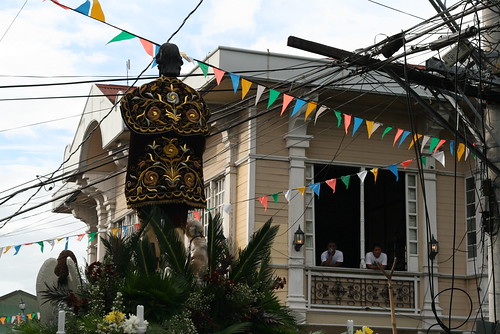

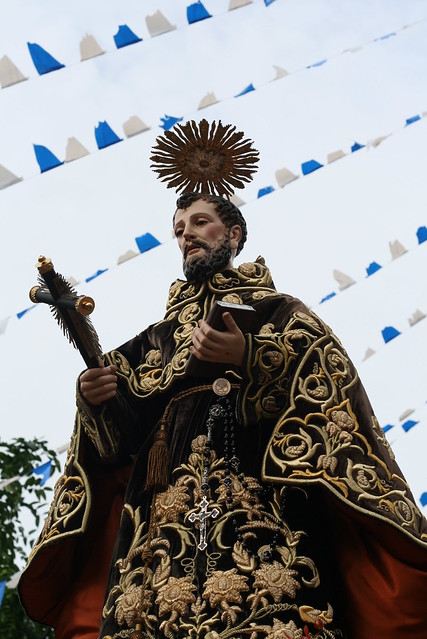

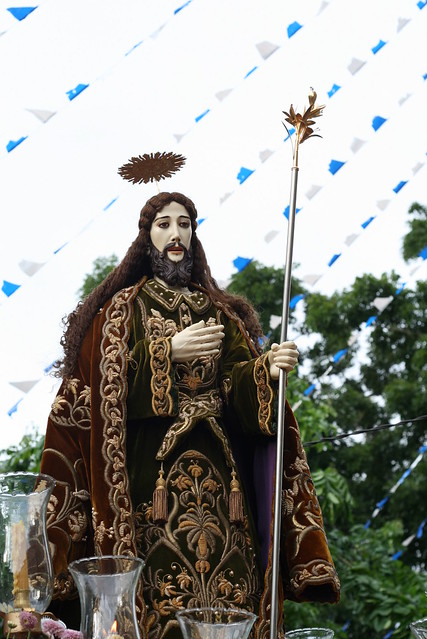

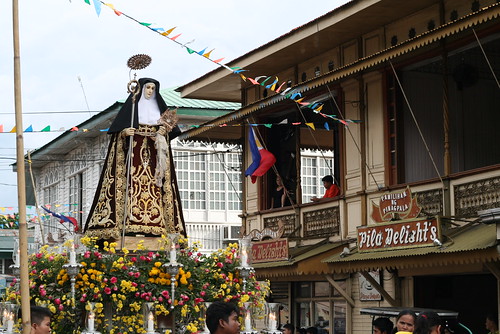

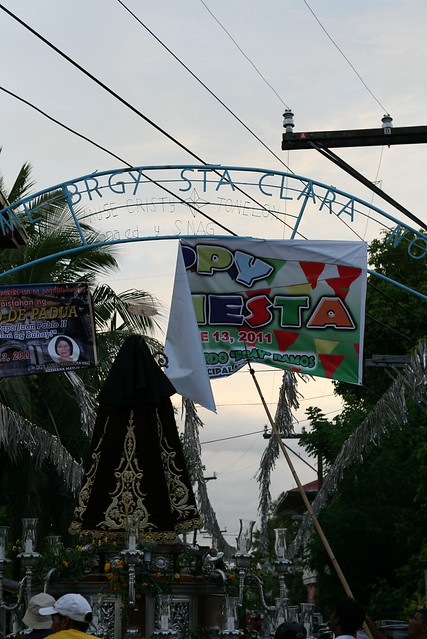















.jpg)















